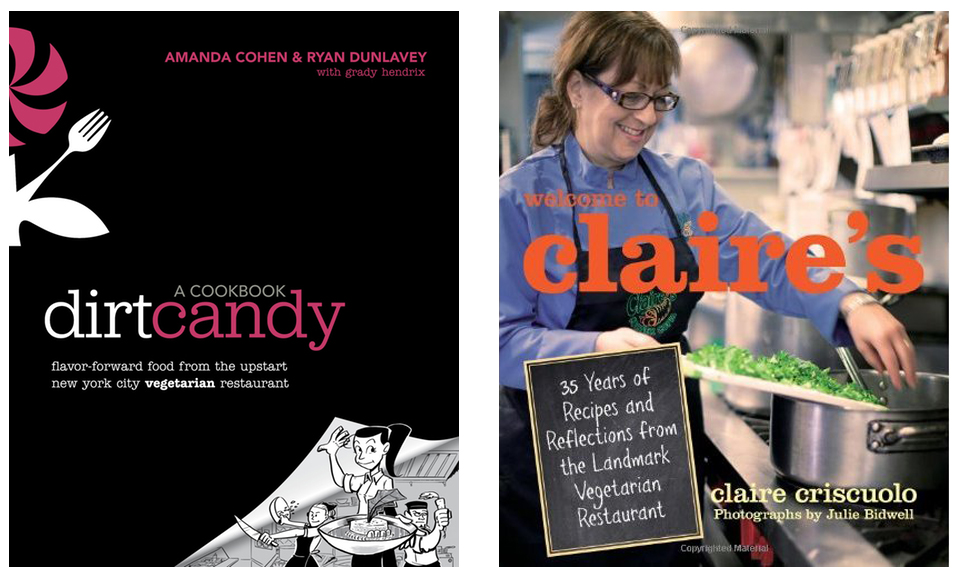 There isn't a recipe in Jerusalem, the new cookbook from London (by way of Jerusalem) writers Yotam Ottolenghi and Sami Tamimi that doesn't intrigue me. Each speaks volumes about the flavors, tastes and foodways of this ancient city. Some recipes are demanding and worthy of an afternoon of cooking, others are radically simple in the parlance I speak: boasting an ineffable balance of ease, number of ingredients and time required. Here are two of my favorites:
There isn't a recipe in Jerusalem, the new cookbook from London (by way of Jerusalem) writers Yotam Ottolenghi and Sami Tamimi that doesn't intrigue me. Each speaks volumes about the flavors, tastes and foodways of this ancient city. Some recipes are demanding and worthy of an afternoon of cooking, others are radically simple in the parlance I speak: boasting an ineffable balance of ease, number of ingredients and time required. Here are two of my favorites:
Swiss chard fritters with feta According to Yotam and Sami, "The intense green color of these fritters, originally Turkish, is paralleled by a wonderfully concentrated "green flavor" of chard and herbs. They are a truly marvelous way to start a meal. Spinach makes a good substitute for the chard; increase the quantity by 50% and just wilt it in a pan instead of boiling it.
14 ounces Swiss chard leaves, white stalks removed 1 ounce flat-leaf parsley 2/3 ounce cilantro 2/3 ounce dill 1-1/2 teaspoons grated nutmeg 1/2 teaspoon sugar 3 tablespoons all-purpose flour 2 cloves garlic, crushed 2 large free-range eggs 3 ounces feta cheese, in small pieces 4 tablespoons olive oil 1 lemon, cut into 4 wedges salt and freshly ground black pepper
Bring a large pan of salted water to a boil, add the chard and simmer for 5 minutes. Drain the leaves and squeeze until completely dry. Place in a food processor with the herbs, nutmeg, sugar, flour, garlic, eggs, 1/4 teaspoon salt, and black pepper. Blitz until smooth and then fold in the feta by hand. Pour 1 tablespoon of the oil in a medium frying pan. Place over medium-high heat and spoon in a heaping tablespoon of the mixture. Press down to get make each fritter about 2-3/4 inches in diameter and 3/8 inch thick. You should be able to fit about 3 fritters at a time. Cook for 3 to 4 minutes in total, turning once, until they have taken on some color. Transfer to paper towels, then keep each batch warm while you cook the remaining mixture, adding oil as needed. Serve at once with the lemon wedges. Serves 4 as a starter
Butternut squash & tahini spread According to Yotam and Sami, "This dip seems to be fantastically popular with anyone who tries it. There is something about the magical combination of tahini and pumpkin or squash that we always tend to come back to. Serve as a starter with bread or as part of a meze selection. Date syrup can be found in health food stores and Middle Eastern markets.
1 very large butternut squash (almost 2-1/2 pounds) and cut into large chunks (7 cups) 3 tablespoons olive oil 1 teaspoon ground cinnamon 5 tablespoons light tahini paste 2 small cloves garlic, crushed 1/2 cup Greek yogurt 1 teaspoon mixed black and white sesame seeds 1-1/2 teaspoons date syrup 2 tablespoons chopped cilantro salt
Preheat the oven to 400 degrees. Spread the squash out in a medium roasting pan. Pour over the olive oil and sprinkle on the cinnamon and 1/2 teaspoon salt. Mix together well and cover pan tightly with foil. Roast for 70 minutes, stirring once during cooking. Remove from the oven and let cool. Transfer the squash to a food processor, along with the tahini, yogurt and garlic. Roughly pulse until combined into a rough paste, without the spread becoming smooth. This can be done by hand using a fork or potato masher. Spread the paste in a wavy pattern on a large flat plate. Sprinkle with the sesame seeds, drizzle over the syrup and sprinkle with cilantro. Serves 6 to 8
Come meet Yotam and Sami at Congregation Beth Elohim on Wednesday, October 24th. I will be the host for the evening -- the interview begins at 7:30 p.m. You can register here. Autographed books will be for sale.



